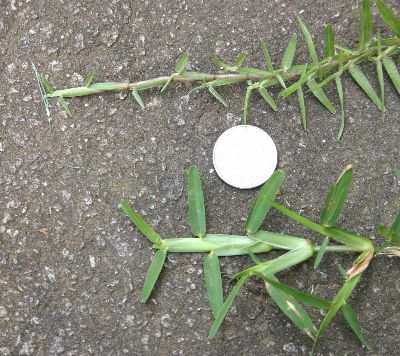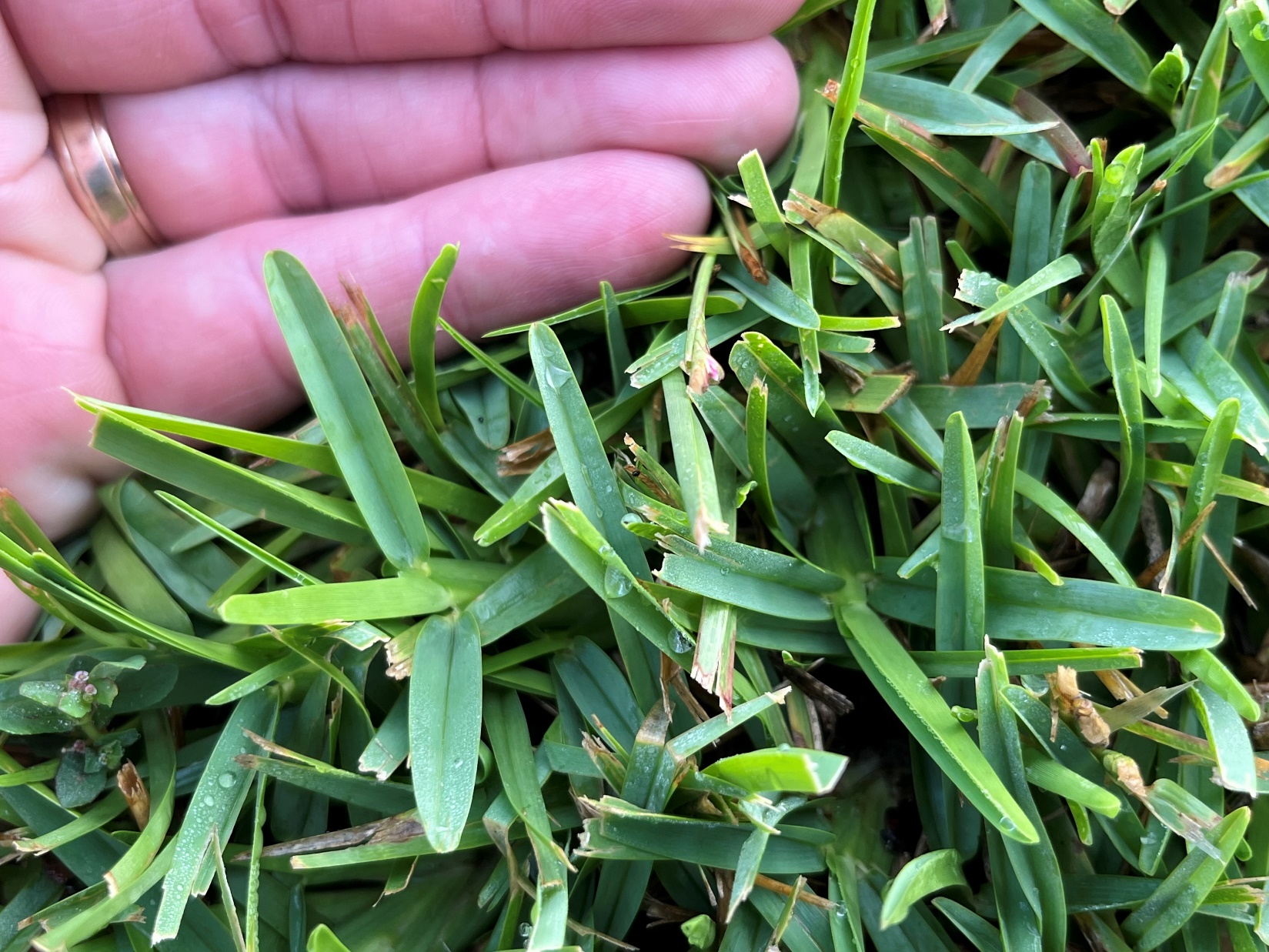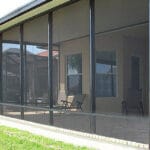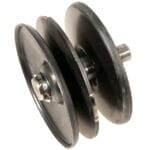Are you struggling to choose the right grass for your lawn? Centipede Grass and St. Augustine are two popular options, but which one is best for your yard?
Picking the right grass can transform your lawn into a lush, green paradise. Imagine stepping out onto a soft, verdant carpet that feels perfect under your feet and looks stunning. But making the wrong choice could lead to frustration and costly maintenance.
Don’t worry, though. We’ll break down the differences between Centipede Grass and St. Augustine in a way that’s easy to understand. By the end, you’ll know exactly which one is right for your home. Ready to find the perfect grass for your lawn? Let’s dive in!
Centipede Grass Characteristics
Centipede Grass thrives in acidic, sandy soils and requires less maintenance. St. Augustine Grass prefers warm climates and offers a thick, lush lawn. Each grass type suits different environments, making the choice dependent on specific lawn care needs.
Centipede grass is known for its unique characteristics. It’s favored by many homeowners for its low maintenance needs. This grass type offers distinct qualities that make it a popular choice in certain regions.Growth Habits
Centipede grass grows slowly. It requires less mowing than other grasses. The growth pattern is horizontal, spreading across the ground. This creates a dense carpet-like appearance. It also has a shallow root system. This makes it less tolerant to foot traffic.Color And Texture
The grass has a light green color. Its texture is coarse compared to other lawns. The blades are wider and thicker. This gives it a rugged appearance. Despite its coarseness, it can look neat when maintained properly.Climate Suitability
Centipede grass thrives in warm climates. It’s perfect for southern regions in the United States. It prefers full sun but can handle partial shade. It does not tolerate cold weather well. Frost can damage it easily. It’s best suited for areas with mild winters.
Credit: www.walterreeves.com
St Augustine Grass Features
St Augustine grass is a popular choice for lawns. It offers unique features that make it stand out. Its lush appearance and adaptability are key reasons for its popularity.
Growth Patterns
St Augustine grass grows quickly. It forms dense mats that cover the soil well. This growth helps prevent weeds from taking over. It’s known for spreading through stolons, which are horizontal stems. These stems root themselves into the ground, creating a thick carpet. The grass grows best in warm climates. It does not thrive in cold weather.
Visual Appeal
This grass has broad, flat blades. The blades are a vibrant green color. They give lawns a rich, healthy look. The texture is soft and pleasant to walk on. Its appearance is ideal for residential and commercial landscapes. It maintains its color well in sunny conditions. The grass can bring life to any outdoor space.
Optimal Conditions
St Augustine grass prefers full sun. It can tolerate some shade but grows best with plenty of light. Well-drained soil is crucial. The grass requires regular watering to stay healthy. It is sensitive to drought but can recover quickly if watered properly. Fertilization improves its growth and color. It is important to protect it from pests and diseases.
Maintenance Requirements
Centipede grass and St Augustine are popular choices for lawns. Each has unique maintenance needs. Understanding these can help keep your grass healthy. Let’s explore the differences in maintenance requirements.
Mowing Practices
Centipede grass prefers a shorter cut. Set the mower to 1.5 inches high. It grows slowly, so mowing every two weeks is enough. St Augustine grass grows faster. Keep it at 3 to 4 inches tall. Mowing weekly helps maintain its lush appearance.
Watering Needs
Centipede grass likes less water. It thrives in drier conditions. Watering once a week is often sufficient. St Augustine needs more moisture. Water it deeply twice a week. This ensures strong roots and prevents browning.
Fertilization Schedules
Centipede grass requires minimal fertilization. Apply a gentle fertilizer twice a year. Spring and fall are ideal times. St Augustine benefits from regular feeding. Fertilize every two months during growing season. This helps maintain its vibrant green color.

Credit: hgic.clemson.edu
Pest And Disease Resistance
Pest and disease resistance is a crucial factor in choosing grass. Centipede and St Augustine grasses both have their strengths and weaknesses. Understanding these can help maintain a healthy lawn. Let’s explore how each grass handles pests and diseases.
Common Pests
Centipede grass often attracts ground pearls. These pests can weaken the grass. St Augustine grass is prone to chinch bugs. They feed on the grass blades, causing damage. Both grasses need attention to prevent pest infestations.
Disease Vulnerabilities
Centipede grass can suffer from large patch disease. This disease thrives in moist conditions. St Augustine grass is vulnerable to gray leaf spot. This disease spreads quickly in warm, wet weather. Being aware of these diseases helps in early detection.
Preventative Measures
Proper lawn care reduces pest and disease risks. Mow regularly and water appropriately. For Centipede grass, avoid over-fertilizing. It helps prevent ground pearl attraction. For St Augustine grass, ensure good drainage. It minimizes the chances of gray leaf spot.
Both grasses benefit from routine inspections. Spotting issues early makes management easier. Using targeted treatments can control pests effectively. Keep your lawn healthy and vibrant.
Environmental Impact
Choosing the right grass for your lawn involves many factors. Environmental impact is crucial. Centipede Grass and St. Augustine Grass each affect the environment differently. Understanding their characteristics can help make an informed decision.
Drought Tolerance
Centipede Grass shows strong drought tolerance. It needs less water than St. Augustine. This makes it ideal for dry regions. St. Augustine Grass requires more water. It struggles in prolonged dry spells. Consider water availability in your area.
Soil Health
Centipede Grass thrives in acidic soil. It improves soil health by reducing erosion. St. Augustine Grass prefers nutrient-rich soil. It can improve soil with proper care. Both grasses contribute to soil vitality.
Ecosystem Benefits
Centipede Grass supports local wildlife. It provides shelter for small animals. St. Augustine Grass offers a dense habitat. It attracts insects and birds. Both grasses enhance biodiversity. They create balanced ecosystems.

Credit: www.youtube.com
Cost Considerations
Choosing the right grass for your lawn involves considering various factors. Cost is a significant aspect that influences this decision. Centipede grass and St. Augustine grass offer different advantages. Understanding the financial implications can help make an informed choice.
Installation Expenses
Centipede grass is often less expensive to install. It requires fewer seeds or sod pieces per square foot. This makes it budget-friendly for large areas. St. Augustine grass costs more for installation. It usually needs more sod pieces to cover the same area.
Long-term Maintenance Costs
Centipede grass is known for low maintenance. It requires less fertilizer and mowing. This reduces long-term costs and effort. St. Augustine grass demands regular care. More watering, mowing, and fertilizing increase expenses over time.
Value For Money
Centipede grass offers good value for money. It thrives with minimal care, saving time and money. St. Augustine grass provides a lush look. It can be worth the cost for those seeking an attractive lawn. Consider priorities to determine the best fit for your landscape.
Aesthetic Appeal
Centipede grass offers a tidy, green carpet look with minimal maintenance, perfect for a relaxed landscape. St Augustine grass boasts a lush, dense appearance, ideal for those desiring a rich, vibrant lawn. Both options enhance outdoor spaces, each bringing unique beauty to gardens.
When considering the aesthetic appeal of your lawn, Centipede Grass and St. Augustine present unique visual experiences. Each grass type brings its own charm and character to your yard. Let’s dive deeper into how each can transform your landscape.Visual Differences
Centipede Grass is known for its light-green hue and finer blades. Its dense mat-like growth gives a neat and tidy appearance, ideal for those who prefer a well-manicured lawn. On the other hand, St. Augustine boasts broader blades and a darker, richer green color, offering a lush and vibrant look. Walking through a neighborhood, you might notice Centipede Grass lending a subtle elegance, while St. Augustine makes a bolder statement. Both have their own beauty. Which do you imagine enhancing your home’s curb appeal?Impact On Landscape Design
Your choice between Centipede Grass and St. Augustine can significantly influence your landscape design. Centipede Grass provides a low-maintenance option that pairs well with minimalist and modern designs. Its uniform look complements clean lines and simple garden features. St. Augustine, with its robust growth, can support more intricate landscapes with diverse plantings. Its ability to tolerate some shade makes it perfect for gardens with trees and shrubs. Would you prefer a minimalist touch or a more vibrant garden?Seasonal Changes
Centipede Grass remains green throughout the warmer months but may go dormant and brown in winter. This seasonal change requires you to consider how your lawn will look year-round. St. Augustine generally retains its color longer into cooler months, providing a consistent aesthetic. Imagine your garden in winter. Is a touch of winter browning a dealbreaker, or do the lush summer months make up for it? Both options offer beauty, but your seasonal expectations might sway your decision. Ultimately, choosing between Centipede Grass and St. Augustine comes down to personal preference and lifestyle. By understanding their unique aesthetic appeals, you can make a choice that not only enhances your lawn but also reflects your personal taste.Choosing The Right Grass
Choosing between Centipede and St Augustine grass involves considering climate and maintenance needs. Centipede thrives in sunny, sandy soils, while St Augustine suits shaded areas with high humidity. Both offer unique benefits, influencing the best choice for your lawn.
Choosing the right grass for your lawn is more than just a gardening decision; it’s about aligning your outdoor space with your lifestyle, climate, and personal taste. With options like Centipede Grass and St. Augustine, you may wonder which one suits your needs best. Whether you enjoy hosting backyard barbecues, or simply want a low-maintenance lawn, the right grass can make all the difference. Let’s explore some key factors to consider when making your choice.Climate Compatibility
Your local climate plays a crucial role in determining which grass will thrive. Centipede Grass is well-suited for warm climates, particularly in the southeastern United States. It loves the sun and requires minimal watering. On the other hand, St. Augustine is more tolerant of shade and does well in coastal regions. It can handle the salty air and occasional droughts, making it ideal for areas with variable weather patterns. Consider your area’s climate to ensure your grass stays lush and healthy.Lawn Usage
How do you plan to use your lawn? If you have kids or pets, or if you frequently entertain guests outdoors, lawn durability is essential. St. Augustine tends to be more robust and can handle foot traffic better than Centipede Grass. However, if your lawn is more for aesthetic appeal, Centipede Grass, with its fine texture and lower growth habit, can provide a neat and tidy appearance. Think about your typical lawn activities and choose the grass that aligns with your lifestyle.Personal Preferences
Your personal preferences are just as important as practical considerations. Do you prefer a lush, carpet-like lawn? St. Augustine is known for its dense growth and rich color. Alternatively, if you favor a less demanding lawn that requires less mowing, Centipede Grass might be your go-to choice. Reflect on the maintenance level you’re willing to commit to and the visual appeal you desire. Have you ever walked barefoot on a lawn and felt the distinct texture? That feeling could be a decisive factor in your choice. Choosing the right grass for your lawn involves a mix of practical and personal considerations. By evaluating climate compatibility, lawn usage, and your preferences, you can make a well-informed decision. What matters most to you when selecting grass for your yard?Frequently Asked Questions
What Are The Main Differences Between Centipede And St Augustine Grass?
Centipede is low-maintenance. St Augustine is lush and shade-tolerant. Centipede suits sandy soil. St Augustine handles salt well.
Which Grass Is More Drought-tolerant, Centipede Or St Augustine?
Centipede handles drought better. It needs less water. St Augustine requires regular watering to stay healthy.
Can I Plant Centipede And St Augustine Together?
Not ideal. They have different needs. Centipede prefers acidic soil. St Augustine thrives in neutral pH.
Which Grass Grows Faster, Centipede Or St Augustine?
St Augustine grows faster. It spreads quickly. Centipede has a slower growth rate and needs less mowing.
How Do I Maintain Centipede And St Augustine Grass?
Centipede requires minimal care. Fertilize less. St Augustine needs regular mowing and fertilization for best results.
Conclusion
Both centipede grass and St. Augustine have unique benefits. Choose based on your climate and needs. Centipede grass thrives in sandy soil. It’s low-maintenance and drought-resistant. St. Augustine prefers warmer climates. It grows thick and lush, ideal for shade. Consider your area’s weather patterns.
Soil type matters too. Think about your lawn care routine. Which grass fits your lifestyle better? Your choice affects your lawn’s look and feel. Choose wisely for a beautiful yard. Making the right decision ensures satisfaction. Enjoy your vibrant, green lawn for years.




